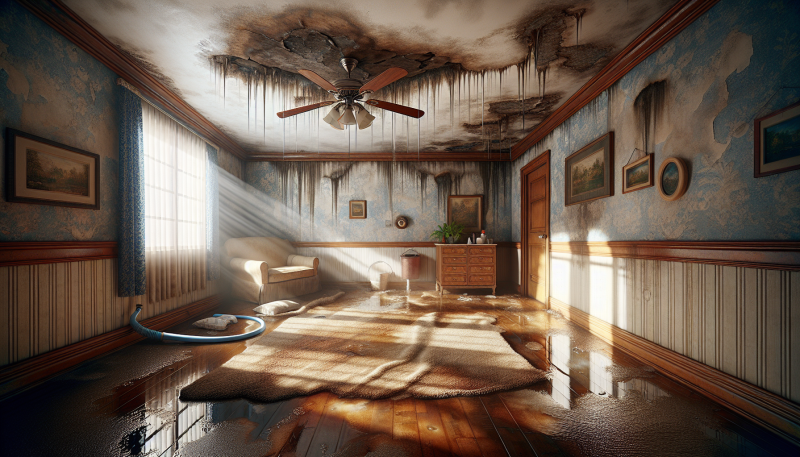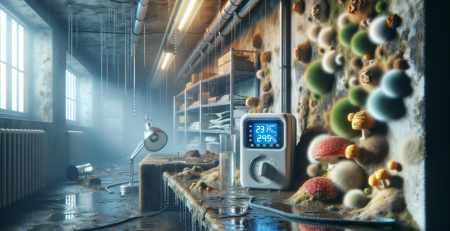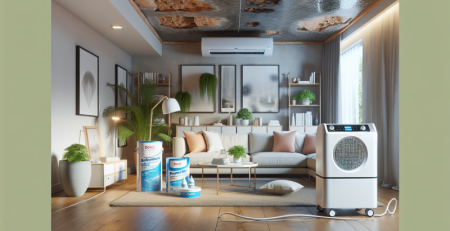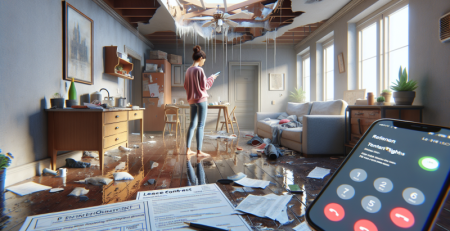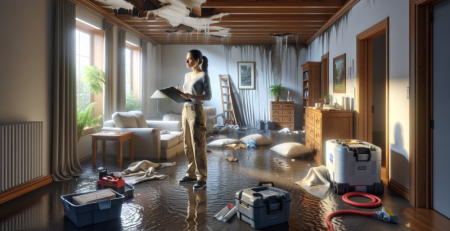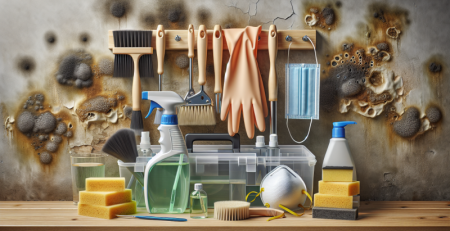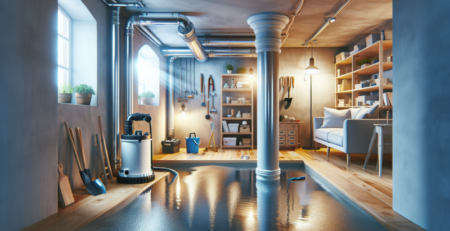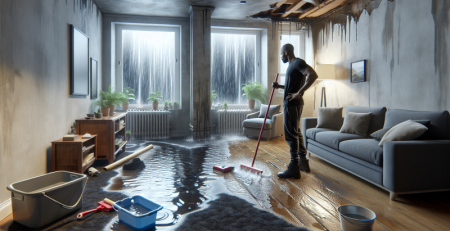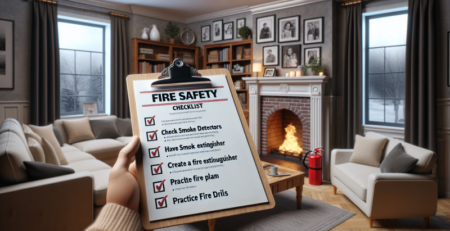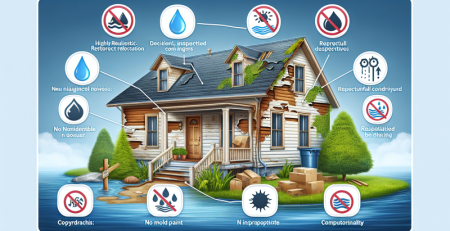How to Identify Signs of Hidden Water Damage
Water damage can be a sneaky foe, often lurking behind walls, under floors, or in places we least expect. It’s not just the visible stains or damp spots that we need to worry about; hidden water damage can lead to serious issues like mold growth, structural damage, and costly repairs. In this guide, we’ll walk you through the steps to identify signs of hidden water damage in your home. Whether you’re a homeowner, a renter, or just someone curious about property maintenance, this information is crucial. Let’s dive in!
Understanding Water Damage
Before we jump into the signs of hidden water damage, it’s essential to understand what water damage is and how it can occur. Water damage refers to the destruction of property and materials due to water intrusion. This can happen from various sources, such as:
- Leaking pipes
- Roof leaks
- Flooding
- High humidity
- Appliance malfunctions
Each of these sources can lead to different types of damage. For instance, a leaking pipe might cause water to seep into walls, leading to mold growth, while a roof leak can damage insulation and ceilings. Understanding these sources helps you know where to look for potential issues.
In New Jersey, where weather conditions can vary dramatically, being proactive about water damage is vital. If you suspect water damage in your home, it’s best to consult with professional restoration services like Kraus Restoration, who specialize in water damage restoration New Jersey.
Common Signs of Hidden Water Damage
Now that we have a grasp on what water damage is, let’s explore the common signs that indicate hidden water damage. These signs can often be subtle, so it’s important to be vigilant.
1. Unexplained Stains or Discoloration
One of the most obvious signs of water damage is stains or discoloration on walls and ceilings. These stains can appear yellow, brown, or even black, and they often indicate that water has been seeping through. If you notice these stains, it’s crucial to investigate further. Look for:
- Water stains on ceilings, especially in rooms below bathrooms or kitchens.
- Discoloration around windows or doors.
- Stains on walls, particularly in basements or crawl spaces.
These stains can be a sign of a leaky roof, plumbing issues, or even condensation problems. If you find stains, don’t ignore them; they could lead to more significant issues like mold growth, which requires mold cleanup New Jersey services.
2. Musty Odors
Have you ever walked into a room and noticed a musty smell? This odor is often a telltale sign of mold or mildew, which thrive in damp environments. If you detect a musty odor, it’s a good idea to investigate further. Check for:
- Hidden leaks in plumbing or appliances.
- Moisture in basements or crawl spaces.
- Condensation on windows or walls.
Ignoring musty odors can lead to serious health issues, especially for those with allergies or respiratory problems. If you suspect mold, contact Kraus Restoration for mold cleanup New Jersey services.
3. Peeling Paint or Wallpaper
Another sign of hidden water damage is peeling paint or wallpaper. When water seeps into walls, it can cause the paint or wallpaper to lose its adhesion, leading to bubbling or peeling. If you notice this in your home, it’s time to investigate. Look for:
- Areas where paint is bubbling or flaking.
- Wallpaper that is lifting or has wrinkles.
- Moisture behind the paint or wallpaper when touched.
This issue can often be traced back to leaks or high humidity levels. If you find significant damage, consider reaching out to fire damage repair New Jersey experts who can also assist with water damage restoration.
4. Warped or Buckled Flooring
Floors can also give you clues about hidden water damage. If you notice that your hardwood floors are warping, buckling, or feel spongy underfoot, it’s a sign that moisture is trapped beneath. Check for:
- Areas where the floor feels uneven or soft.
- Visible gaps between floorboards.
- Discoloration or stains on the flooring.
Water damage can compromise the integrity of your flooring, leading to costly repairs. If you suspect water damage, it’s best to consult with IICRC certified experts who can assess the situation and provide a rapid response restoration.
5. Increased Utility Bills
Have you noticed a spike in your water bill? This could be a sign of hidden leaks somewhere in your plumbing system. If you’re using more water than usual without any changes in your habits, it’s time to investigate. Look for:
- Leaking faucets or toilets.
- Wet spots in your yard that shouldn’t be there.
- Moisture in your basement or crawl space.
Addressing leaks early can save you money in the long run and prevent further damage. If you suspect a leak, contact a professional for assistance. Kraus Restoration offers 24/7 emergency services to help you tackle these issues promptly.
How to Investigate Further
If you’ve noticed any of the signs mentioned above, it’s time to take action. Here’s how you can investigate further to identify the source of the hidden water damage:
1. Conduct a Visual Inspection
Start by conducting a thorough visual inspection of your home. Look for any signs of water damage in areas like:
- Bathrooms and kitchens
- Basements and crawl spaces
- Attics and roofs
Pay close attention to areas around plumbing fixtures, windows, and doors. Look for discoloration, stains, or any signs of moisture. Don’t forget to check behind appliances like refrigerators and washing machines, as these can often hide leaks.
2. Use a Moisture Meter
A moisture meter is a handy tool that can help you detect hidden moisture in walls, ceilings, and floors. These devices can measure the moisture content in materials, helping you pinpoint areas that may be affected by water damage. If you don’t have a moisture meter, consider borrowing one or purchasing an affordable model.
When using a moisture meter, test various areas of your home, especially those that show signs of damage. This can help you identify the extent of the problem and whether it’s time to call in the experts.
3. Check for Leaks
If you suspect a leak, it’s essential to check your plumbing system. Look for:
- Leaking pipes under sinks or behind walls.
- Water pooling around appliances.
- Wet spots on ceilings or walls.
If you find a leak, it’s crucial to address it immediately to prevent further damage. Contact a plumber if you’re unable to locate the source of the leak yourself.
4. Call in the Professionals
If your investigation reveals significant water damage or if you’re unsure about the extent of the problem, it’s time to call in the professionals. Companies like Kraus Restoration specialize in water damage restoration New Jersey and can provide you with the expertise needed to assess and repair the damage.
With their IICRC certified experts and 24/7 emergency services, you can rest assured that your home will be in good hands. They’ll conduct a thorough inspection, provide a detailed assessment, and offer solutions tailored to your specific needs.
Preventing Future Water Damage
Once you’ve identified and addressed any hidden water damage, it’s essential to take steps to prevent future issues. Here are some tips to help you keep your home safe from water damage:
1. Regular Maintenance
Regular maintenance is key to preventing water damage. Check your roof for missing shingles, inspect gutters for clogs, and ensure that downspouts direct water away from your foundation. Regularly inspect plumbing fixtures and appliances for leaks, and replace any worn-out hoses or seals.
2. Control Humidity Levels
High humidity can lead to condensation and mold growth. Use dehumidifiers in areas prone to moisture, such as basements and bathrooms. Ensure proper ventilation in your home, especially in kitchens and bathrooms, to help reduce humidity levels.
3. Install Water Detection Devices
Consider installing water detection devices in areas prone to leaks, such as basements and near appliances. These devices can alert you to leaks before they become significant problems, allowing you to take action quickly.
4. Know Your Insurance Policy
Understanding your homeowner’s insurance policy can help you prepare for potential water damage. Review your coverage to ensure you’re protected against water damage and know the steps to take if you need to file a claim.
Conclusion
Identifying signs of hidden water damage is crucial for maintaining the integrity of your home. By being vigilant and proactive, you can catch issues early and prevent costly repairs down the line. Remember to conduct regular inspections, address any signs of water damage promptly, and don’t hesitate to call in the professionals when needed. With the right approach, you can protect your home from the damaging effects of water.
FAQs
What are the most common causes of hidden water damage?
The most common causes include leaking pipes, roof leaks, flooding, high humidity, and appliance malfunctions. Regular inspections can help catch these issues early.
How can I tell if I have mold due to water damage?
Signs of mold include musty odors, visible mold growth, and health issues like allergies or respiratory problems. If you suspect mold, it’s best to consult with professionals for mold cleanup.
Can I handle water damage restoration myself?
While minor issues can sometimes be handled by homeowners, significant water damage often requires professional restoration services to ensure thorough cleanup and repair.
How can I prevent water damage in my home?
Regular maintenance, controlling humidity levels, installing water detection devices, and understanding your insurance policy can help prevent water damage.
What should I do if I find hidden water damage?
If you find hidden water damage, conduct a thorough inspection, check for leaks, and consider contacting a professional restoration service like Kraus Restoration for assistance.
